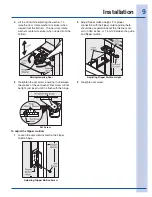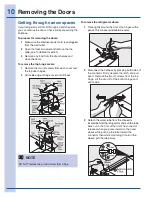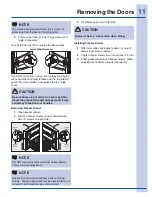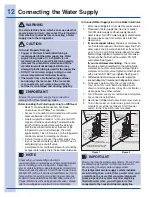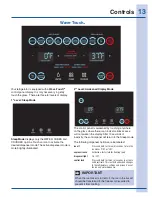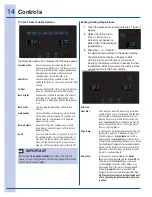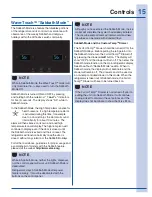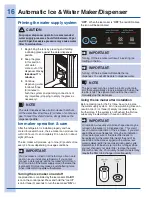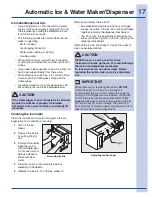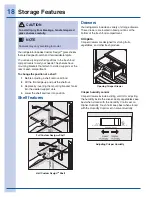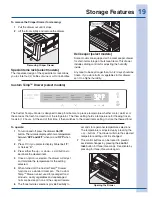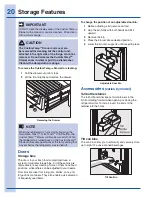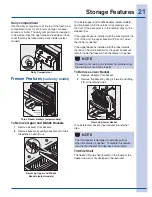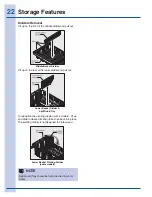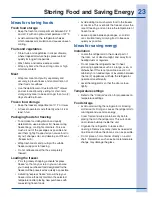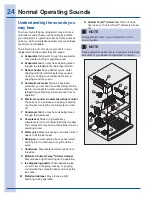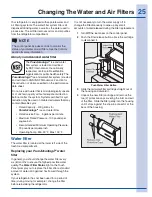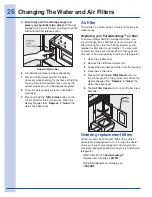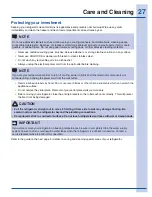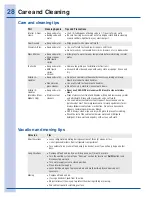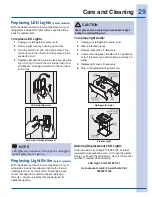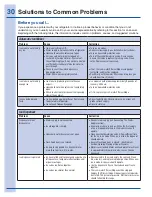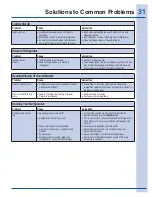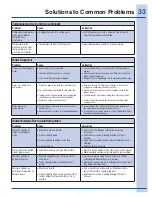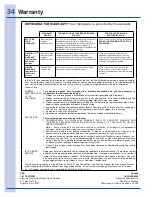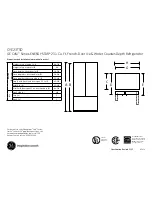
23
Ideas for storing foods
Fresh food storage
• Keep the fresh food compartment between 34° F
and 40° F with an optimum temperature of 37° F.
• Avoid overcrowding the refrigerator shelves,
which reduces air circulation and causes uneven
cooling.
Fruits and vegetables
• Store fruits and vegetables in crisper drawers,
where trapped moisture helps preserve food
quality for longer time periods.
• wash items and remove excess water.
• wrap any items that have strong odors or high
moisture content.
Meat
• wrap raw meat and poultry separately and
securely to prevent leaks and contamination of
other foods or surfaces.
• Use the deli drawer or Custom Temp
TM
drawer
and set to meat/poultry setting for short-term
storage. Any meat to be kept longer than two (2)
days should be frozen.
Frozen food storage
• Keep the freezer compartment at 0° F or lower.
• A freezer operates most efficiently when it is at
least
²⁄₃
full.
Packaging foods for freezing
• To minimize food dehydration and quality
deterioration, use aluminum foil, freezer wrap,
freezer bags, or airtight containers. Force as
much air out of the packages as possible and
seal them tightly. Trapped air can cause food to
dry out, change color, and develop an off-flavor
(freezer burn).
• wrap fresh meats and poultry with suitable
freezer wrap prior to freezing.
• Do not refreeze meat that has completely
thawed.
Loading the freezer
• Prior to grocery shopping, activate “express
freeze” so that on your return you can ensure
your newly purchased food designated for the
freezer will be preserved as quickly as possible.
• Activating “express freeze” also will help your
freezer more efficiently maintain the selected
temperature after placing new purchases with
pre-existing frozen foods.
Storing Food and Saving Energy
• Avoid adding too much warm food to the freezer
at one time. This overloads the freezer, slows the
rate of freezing, and can raise the temperature of
frozen foods.
• Leave a space between packages, so cold air
can circulate freely, allowing food to freeze as
quickly as possible.
Ideas for saving energy
Installation
• Locate the refrigerator in the coolest part of
the room, out of direct sunlight, and away from
heating ducts or registers.
• Do not place the refrigerator next to heat-
producing appliances such as a range, oven, or
dishwasher. If this is not possible, a section of
cabinetry or an added layer of insulation between
the two (2) appliances will help the refrigerator
operate more efficiently.
• Level the refrigerator so that the doors close
tightly.
Temperature settings
• Refer to the “Controls” section for procedures on
temperature settings.
Food storage
• Avoid overcrowding the refrigerator or blocking
cold air vents. Doing so causes the refrigerator to
run longer and use more energy.
• Cover foods and wipe containers dry before
placing them in the refrigerator. This cuts down
on moisture build-up inside the unit.
• Organize the refrigerator to reduce door
openings. Remove as many items as needed at
one time and close the door as soon as possible.
• Do not place a hot container directly on a cold
shelf. Remember, such an extreme temperature
change may damage the glass.

